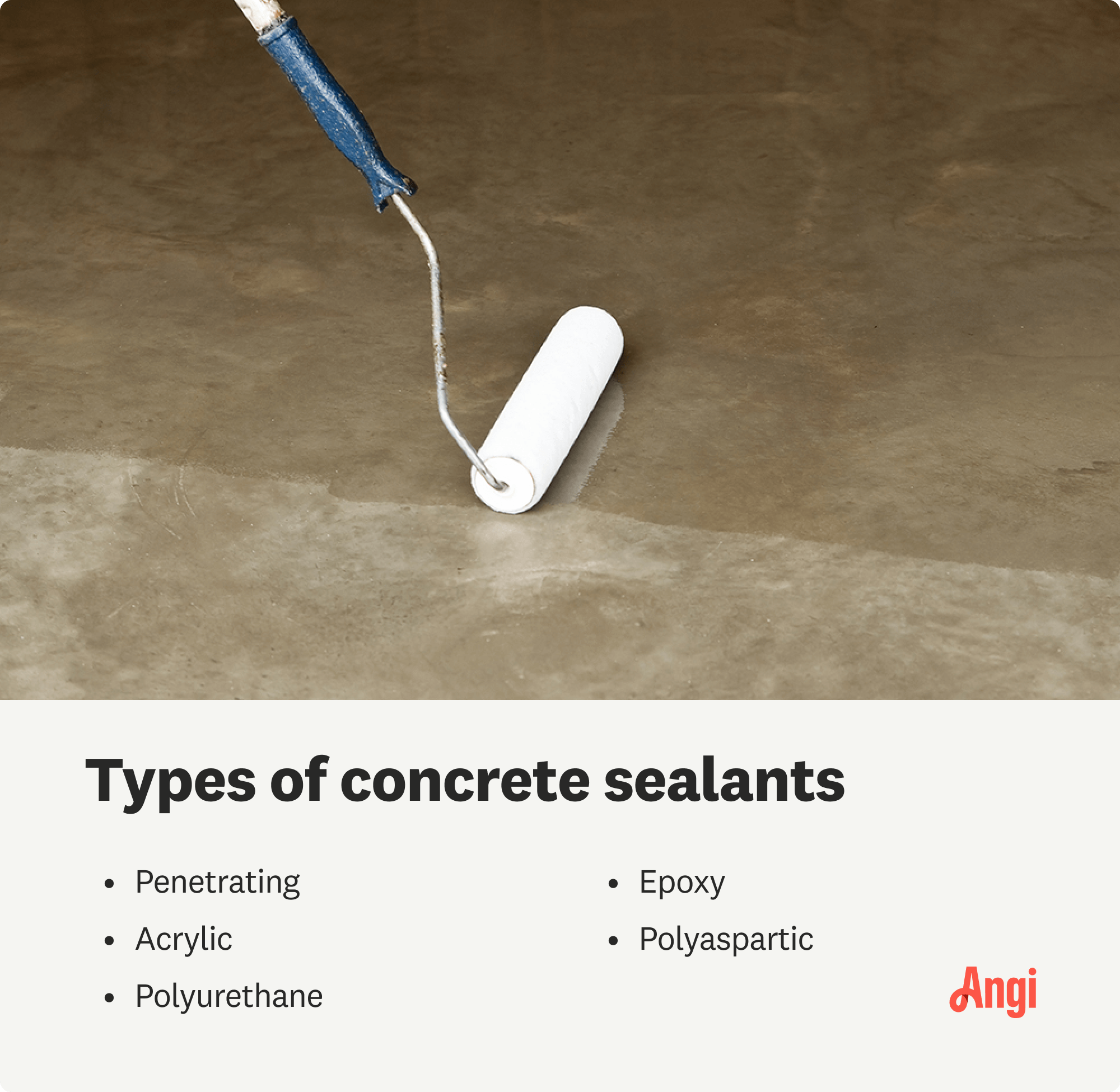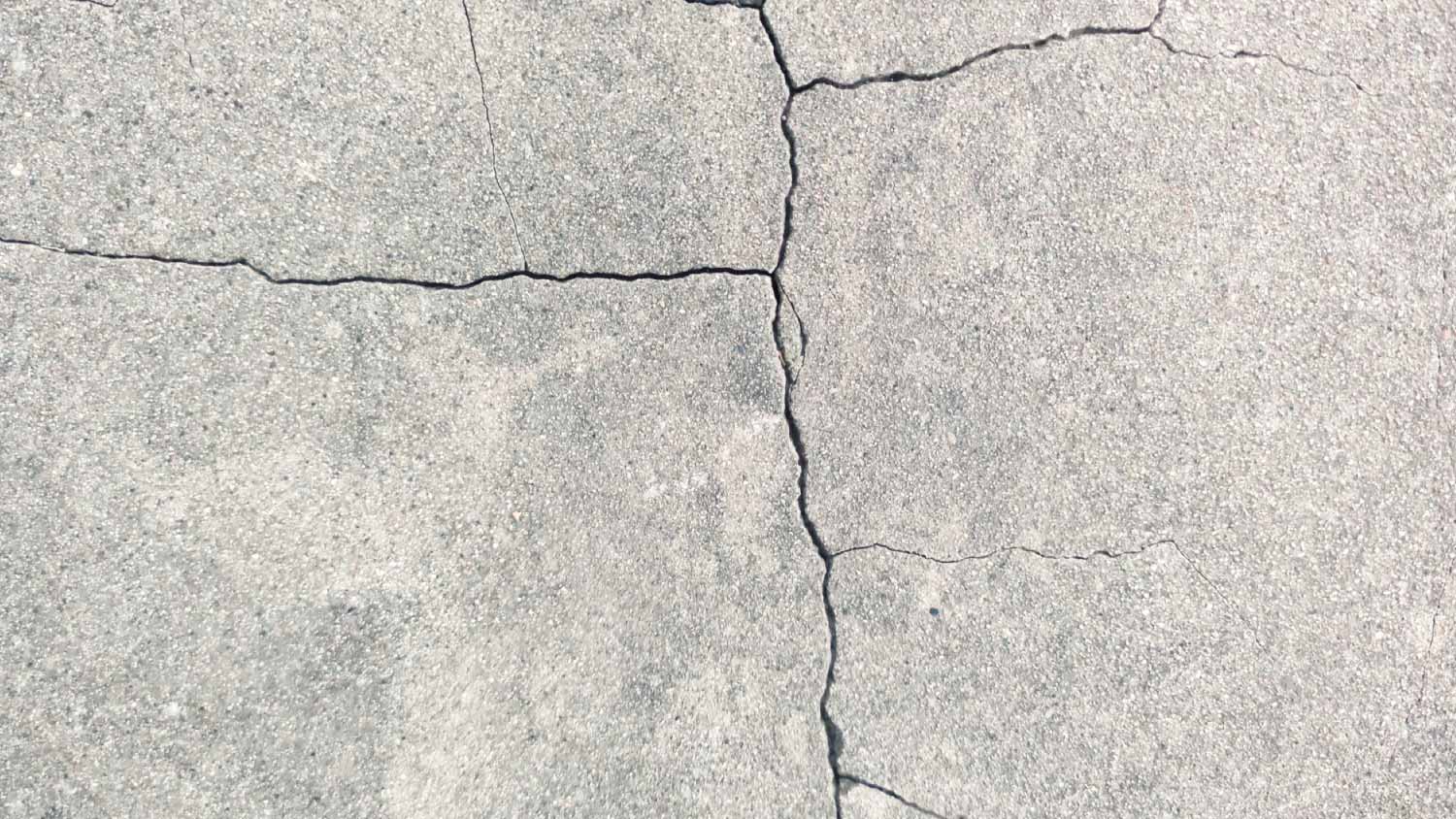
Installing new concrete steps can enhance your home’s curb appeal. Learn all the factors that can affect your concrete steps cost.
Keep your concrete in great shape for years to come


Concrete is a durable, long-lasting material that can look and function its best for decades with the right care. Regular concrete maintenance will keep your driveway, walkways, and patio looking freshly poured. Use these six tips to keep these hard-working surfaces in good condition and free of cracks, stains, and damage.

Thoroughly clean your concrete surfaces once or twice a year. Sweep or use a blower to remove dirt, leaves, and debris, then remove any weeds growing in joints or cracks. Clean the surface using a hose and stiff brush, or use a pressure washer on low pressure to keep from damaging the concrete.
If your concrete looks dusty or has collected a lot of debris but doesn’t need a deep cleaning, rinsing the surface using a hose with a high-pressure nozzle attachment is a quick way to keep it clear throughout the year.
Reseal your concrete every 2 to 3 years. Plan to reseal after you’ve deep cleaned the surface, leaving enough time for the concrete to thoroughly dry before applying the sealant. Sealing will help reduce staining and prevent moisture intrusion, giving your concrete a freshly finished look, whether you’re maintaining stamped concrete or traditional poured concrete.
If you prefer to have the pros handle this job, the cost of sealing concrete averages $1500 but depends on the square footage and the type of sealant used. If your concrete’s surface is in particularly bad shape, investing in the cost of resurfacing the driveway may spare you the expense of replacement.


Concrete cracks don’t just look bad—they can lead to structural instability and damage from water intrusion. Frequently examine your concrete for cracks. Cracks less than 1/4 of an inch wide can be repaired with concrete caulk or filler, but for larger cracks, you’ll need to use concrete patching compound or dry concrete. If the job is too big to tackle, contact a concrete repair pro who can fix the crack correctly. The cost of repairing a concrete driveway averages around $1700.
Even newly poured concrete can crack due to the segregation of concrete that occurs when the different materials that make up concrete separate as the concrete is poured or while it cures. A local concrete company can ensure your new concrete is poured correctly to avoid segregation and cracks.
Spills and stains happen, especially on outdoor surfaces that see a lot of heavy use, like many concrete surfaces. The longer a spill remains, however, the more difficult it is to remove, and you may end up with a permanent stain if you don’t act quickly. Oil, rust, mud, leaves, and mildew can all discolor your concrete, so remove spills and stains with a concrete-safe cleaner as soon as you notice them.
Keep your concrete clean to extend its longevity. Remove weeds, dirt, and other debris with a hose. Avoid using harsh chemicals when cleaning, as it can degrade your concrete.

Your concrete may spend part of the year under ice or snow in colder areas. Clearing the surface correctly will make it safer to walk or drive on and help keep the concrete in good condition. Avoid salt or chemical de-icers when dealing with ice, as they can damage the concrete. Use sand to provide traction instead, and remember to clean off any remaining sand once the weather warms up.
Using a snow plow on concrete can cause scratches and gouges to the surface, putting unnecessary wear on the concrete. Use a shovel or snowblower to clear snow instead.
Over time, concrete can shift and settle, causing large cracks and leading to moisture damage to the concrete and surrounding structures and structural instability. Polyjacking and mudjacking are two methods of concrete leveling that lift and level the concrete back to its original position. Leveling concrete is faster and less expensive than replacing it and can extend the life of your concrete.
From average costs to expert advice, get all the answers you need to get your job done.

Installing new concrete steps can enhance your home’s curb appeal. Learn all the factors that can affect your concrete steps cost.

If your sidewalk is in need of some TLC, this is your comprehensive look at sidewalk replacement cost, so you know what to expect.

Concrete is a durable material but needs maintenance every few years. Use this concrete resurfacing cost guide to get an idea of ongoing maintenance costs.

Dealing with cracked or crumbling concrete on your property? Learn who to call to repair concrete in this guide and the benefits of using a professional.

When your patio, driveway, or walkway needs a new look, can you pour concrete over concrete? Read on to learn when it does—and doesn't—work.

Concrete spalling can create hazardous conditions. Learn about the causes of spalling concrete, along with helpful prevention and repair tips.